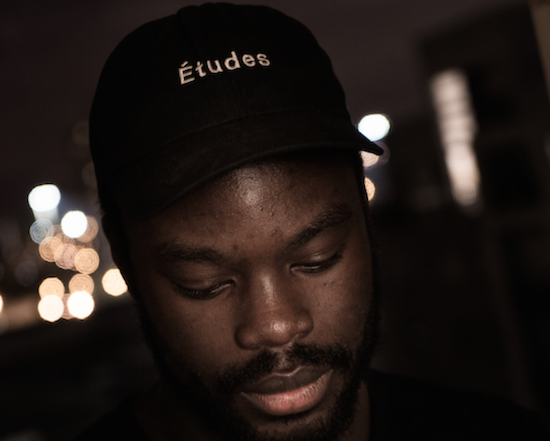Photo by Marvin Jouglineu
Aho Ssan is the artist name of Paris-based Niamké Désiré, who, after studying graphic design and cinema, began to compose electronic music and create his own digital instruments.
Shortly thereafter, he went on to win the Foundation France television prize for his soundtrack to a film by Ingha Mago in 2015, and has worked on several projects related to experimental and electroacoustic music powerhouses IRCAM and GRM in France.
His debut LP, Simulacrum, was released in February 2020, via Subtext, and was based on the concepts of Jean Baudrillard. It navigated society’s presentation of inclusivity and equality in the context of Ssan’s own experience of growing up Black in France. With a new project, Rhizomes, on the way, tQ spoke to the artist about his work as part of his involvement in the roster of SHAPE+ artists for 2023 and 2024.
You have a new project called Rhizomes that largely revolves around collaboration, with artists such as Nicolas Jaar, clipping., Moor Mother, Angel Bat Dawid, Blackhaine, and Lafawndah. Can you tell us more about it?
Aho Ssan: It draws inspiration from the philosophical term "rhizome," borrowed by Édouard Glissant from Gilles Deleuze and Félix Guattari. Rhizome represents an underground stem system that fosters connections between various organisms and allows them to flourish collectively. It’s an album that celebrates collaboration and brings together a diverse group of talented artists. Even though the album talks a lot about my roots and my heritage, the project aims to create a diverse and inclusive collaboration that reflects the richness of different cultures and artistic styles. It is also a multidisciplinary endeavour that aims to explore the intersection of various art forms, such as music, visual arts, poetry and more.
Why did you choose these particular artists, and were there any challenges in the collaborative nature of the project?
AS: All the artists are from different backgrounds and have been a huge inspiration for years now. I feel so lucky to have had the chance to work with them! Of course, all the collaborations are different and that’s the beauty of it. I learnt so much about myself through the artists. I had already had the chance to collaborate with various artists such as KMRU, Exzald S, Resina and Mondkopf, so it was already something I was really comfortable with. You have to be more patient and totally put your ego out of the equation. If I was able only to collaborate, I would do it forever!
You studied graphic design and cinema but went on to compose electronic music and create your own instruments. How do you recollect this path of yours?
AS: Looking back, I see my path as a series of interconnected dots, each one leading me to the next. My background in graphic design and cinema equipped me with a visual sensibility and a storytelling mindset that continues to influence my music-making process. At the same time, my exploration of electronic music and instrument creation has opened up new avenues of expression and allowed me to express myself differently.
You haven’t abandoned cinema as such, and went on to create an award-winning soundtrack in 2015. Do you still collaborate with cinema or audiovisual productions?
AS: I still do! Recently I collaborated on different films with Bertrand Cavalier, Gonçalo Lamas and Josefa Ntjam – her last film presented at Palais De Tokyo. I am also still working on my own film project.
Another of your notable collaborations is with the esteemed IRCAM/GRM, an iconic institution for avant-garde and electroacoustic music. Can you talk about your engagement with this institution?
AS: My engagement with GRM has been a transformative experience. I did a residency for a commissioned piece called The Falling Man, a piece that I had the chance to play on different occasions through their Acousmonium. Thanks to the team, I learnt so much. One of the most exciting aspects of my engagement with GRM is the access to equipment and software tools developed by the institution. These tools enable me to experiment with sound and open up new avenues for sonic exploration and compositional possibilities. Also, It was the first time I worked with synthesisers, such as Surge, Synthi and the famous Coupigny.
Your debut album, Simulacrum, was inspired by the eponymous book by theorist Jean Baudrillard. On this release, you "navigate through society’s presentation of inclusivity and equality against my own experience of growing up Black in France." Can you elaborate on that?
AS: Simulacrum is a deeply personal and introspective journey that seeks to bridge the gap between societal presentation and personal experience. I was excited to work around exploration of identity, race, and the social dynamics around me. At the time, I felt it was the right angle for me to take in order to talk about certain issues such as racism in France. It went further when I connected with my heritage and focused on my grandfather, who was a personality in Ivorian music in the ’50s. Unfortunately, I never had the chance to listen to anything by him. But It was a lot of fun to work with different software to simulate his presence in the record.
Aho Ssan is a participating artist of the SHAPE+ platform, supported by the European Union


